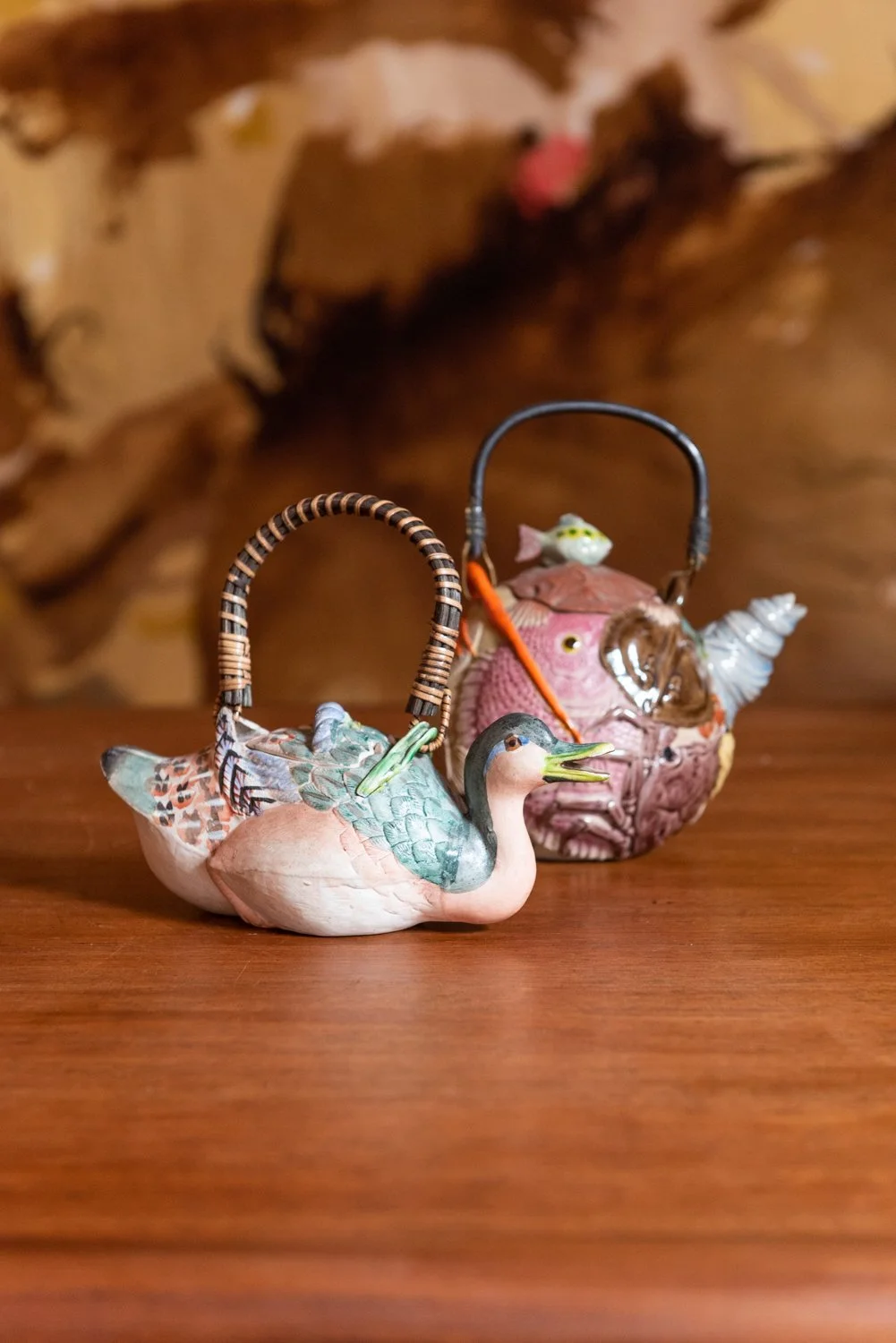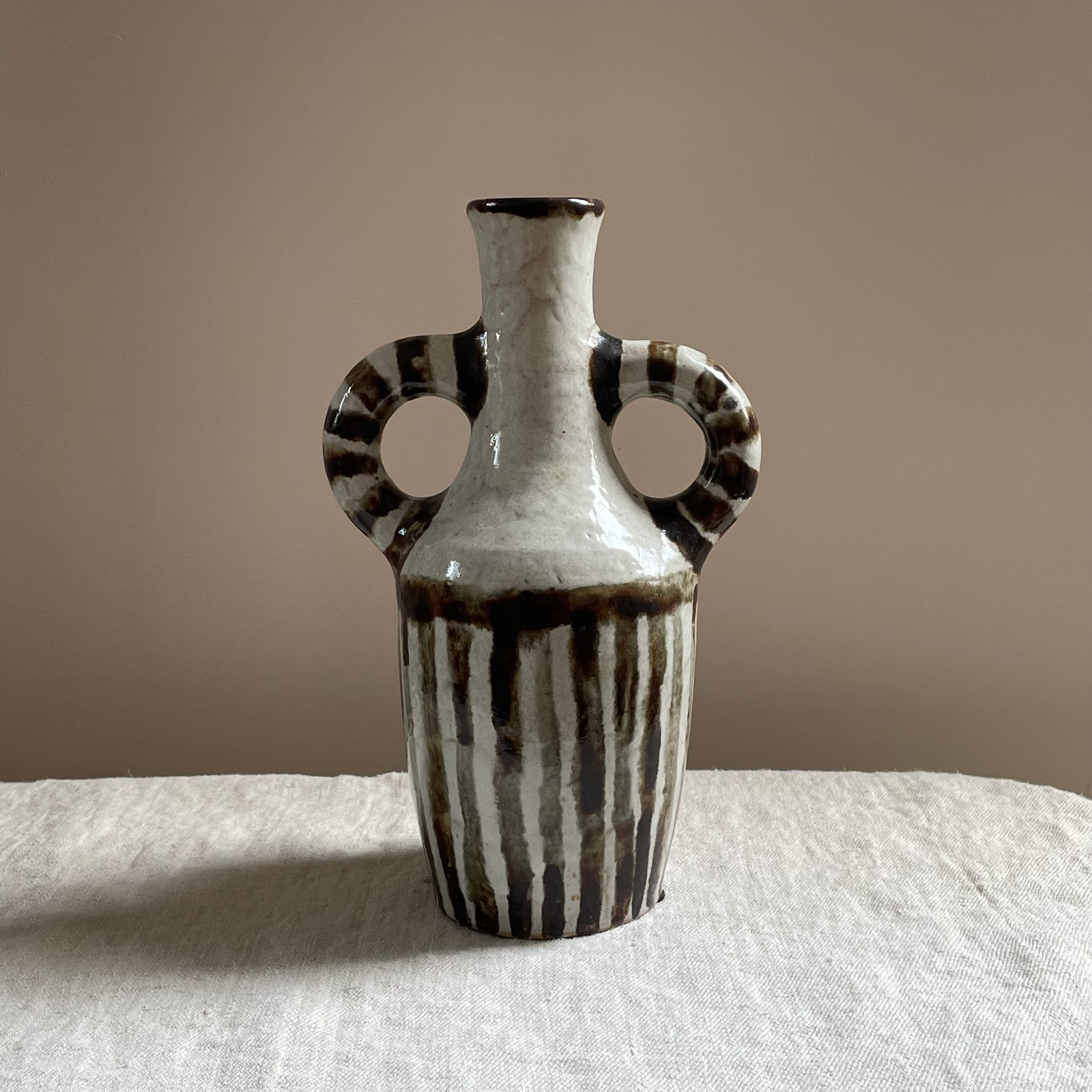Kogo, style Oribe




Kogo, style Oribe
Deux boîtes à encens kogo en grès émaillé, en forme de chouettes
Style Oribe, cuisson au bois, Japon
Epoque Showa
H 6,2 et 5 cm
Bon état général, attachés de cuisson à l’intérieur
Two glazed stoneware kogo incense boxes in the shape of owls
Oribe style, wood fired, Japan
Showa period
H 6,2 and 5 cm
Good general condition, firing attachments on the inside
L’encens est utilisé depuis des siècles au Japon et il est associé à une certaine codification de son usage notamment religieux. Une cérémonie de l’encens existe au même titre que celles liées à l’art floral Ikebana, ou à l’art du thé, chanoyu.
Dans ce contexte précis, un certain nombre de gestes rituels sont accomplis par des initiés dont les ustensiles sont nombreux et affectés à une série de moments.
Les deux boïtes zoomorphes présentées font partie de ce corpus d’objets liés à l’encens.
Elles sont tournées et modelées en grès chamotté à l’émaillage caractéristique du style Oribe.
Elles representent deux chouettes stylisées et sont symboliquement porteuses de chance.
Les boites à encens furent utilisées aussi dans le contexte de cérémonies du thé et cela peut être une raison du choix de cet émaillage vert/ blanc/ noir caractéristique de l’Oribe et apprécié par les amateurs de la cérémonie du thé.
L’invention du décor est datée du début du XVIè siècle et vient en remplacement du stylo Shino grâce à des fours Noborigama, à plusieurs chambres, qui permettent des glaçures plus brillantes grâce aux cuissons dépassant la température de 1220 °C en oxydation.
Ces deux pièces ont fait l’objet d’une cuisson au bois.
Incense has been used for centuries in Japan and is associated with a certain codification of its use, especially religious. An incense ceremony exists in the same way as those linked to the floral art Ikebana, or to the art of tea, chanoyu.
In this precise context, a certain number of ritual gestures are performed by initiates whose utensils are numerous and assigned to a series of moments.
The two zoomorphic boites presented here are part of this corpus of objects related to incense.
They are turned and modeled in chamotte stoneware with a glaze characteristic of the Oribe style.
They represent two stylized owls and are symbolic of good luck.
Incense boxes were also used in the context of tea ceremonies and this may be a reason for the choice of this green/white/black glaze characteristic of Oribe and appreciated by tea ceremony enthusiasts.
The invention of the decoration is dated from the beginning of the 16th century and replaces the Shino pen thanks to Noborigama kilns, with several chambers, which allow more brilliant glazes thanks to firings exceeding the temperature of 1220 °C in oxidation.
These two pieces were fired with wood.










